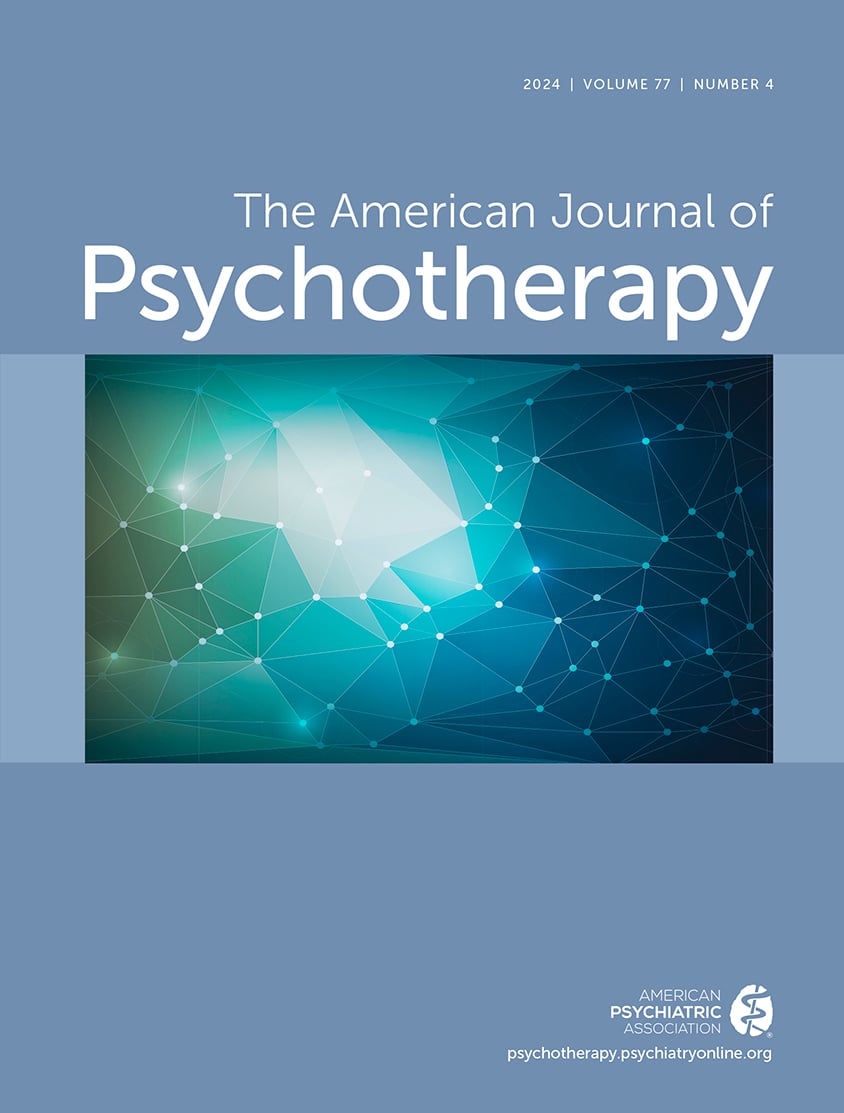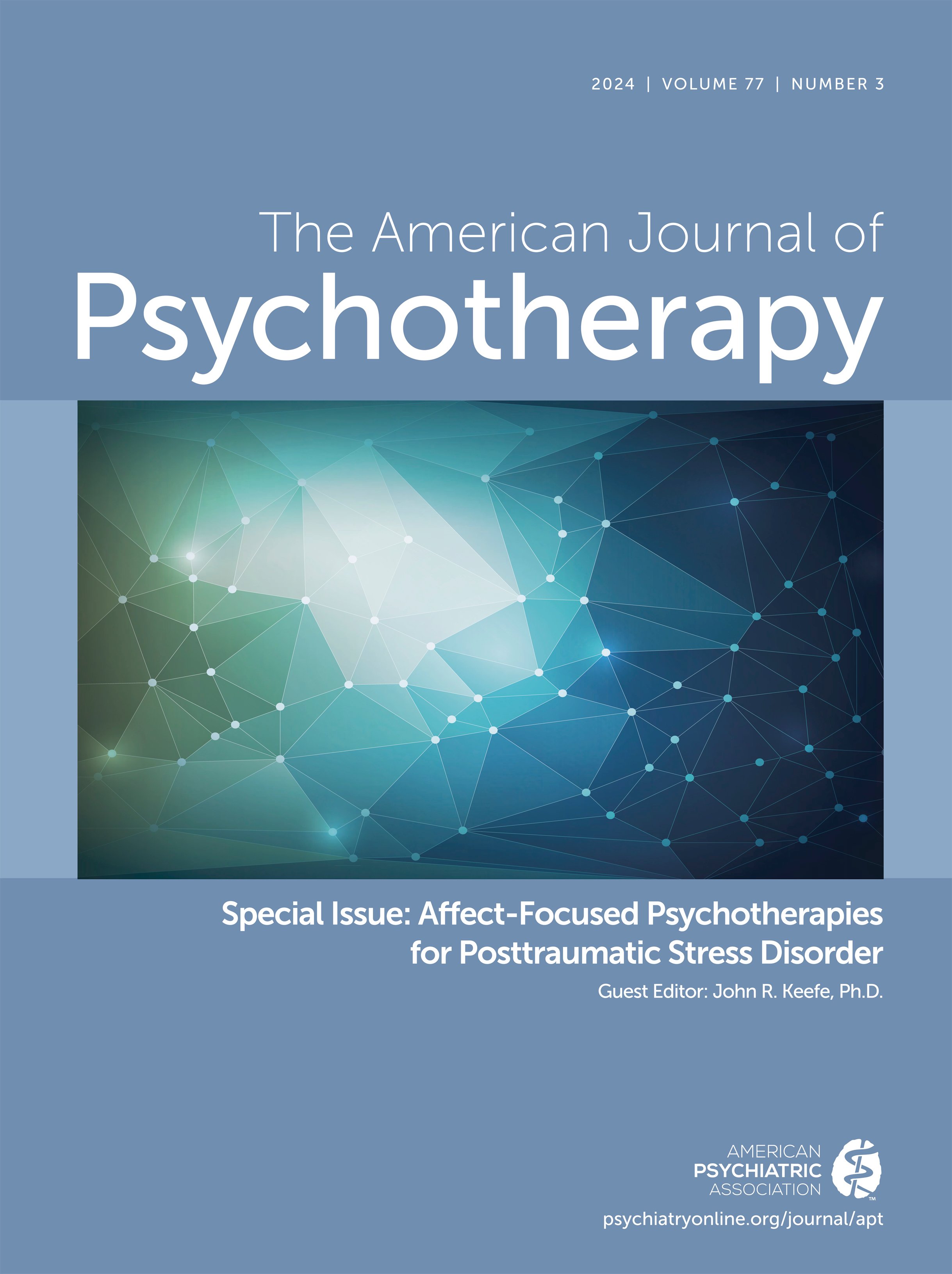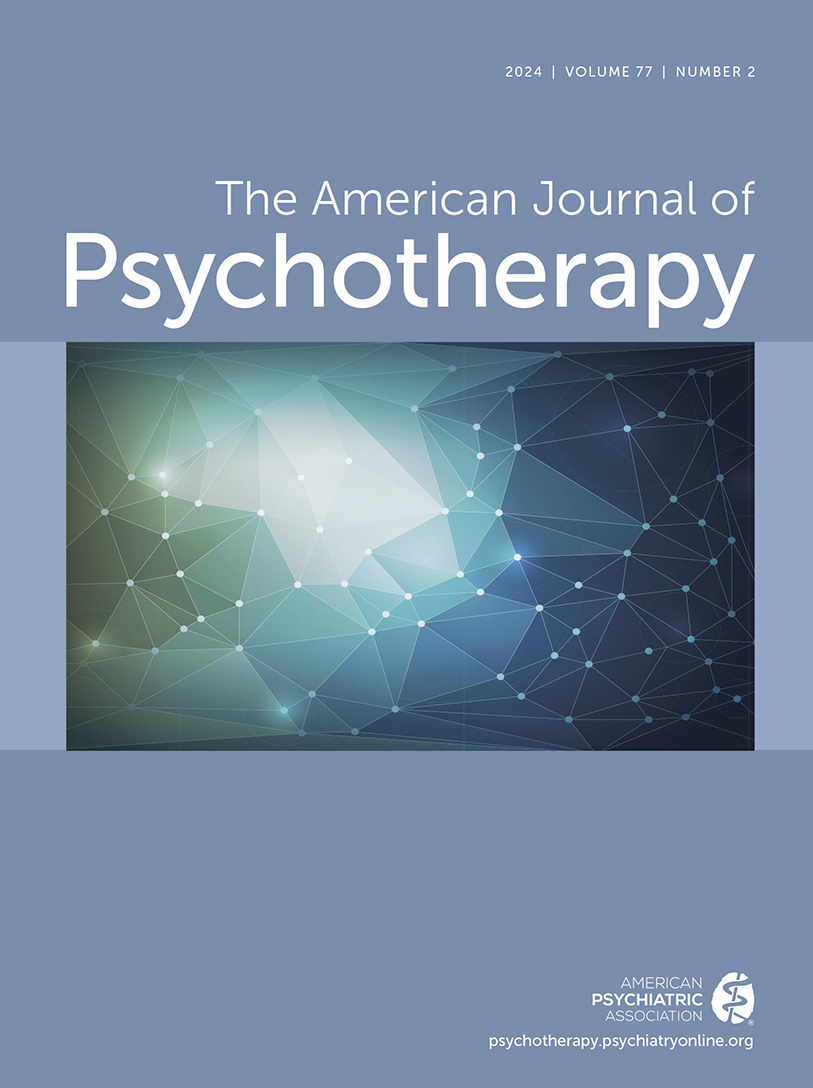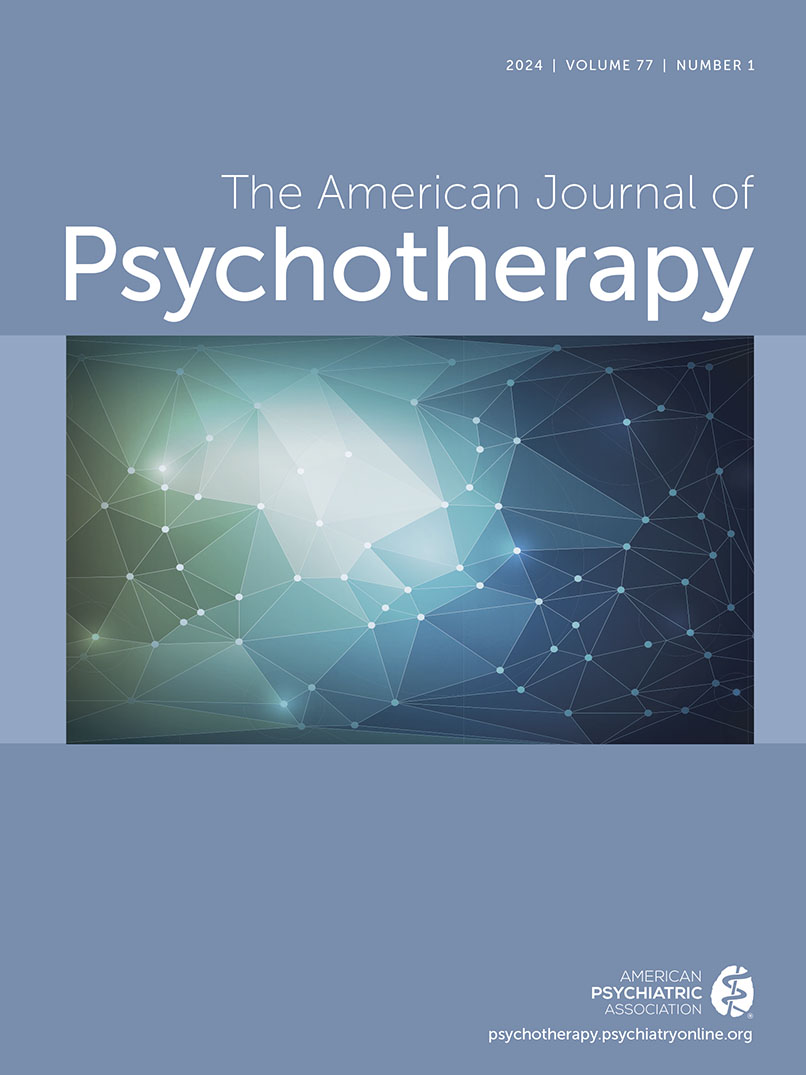American Journal of Psychotherapy
- Volume 39
- Number 1
- January 1985
Editorial
Articles
Publication date: 01 January 1985
Pages4–16In order to achieve more understanding of the term narcissistic personality, particularly as it relates to DSM III, the works of Kohut and Kernberg are examined in much detail The DSM III criteria for the narcissistic personality are found to nicely ...
https://doi.org/10.1176/appi.psychotherapy.1985.39.1.4Publication date: 01 January 1985
Pages17–29Based on a review of the literature and the author’s clinical experience, this paper lists and classifies clinical indicators of prognostic significance for psychotherapy with borderline patients.
https://doi.org/10.1176/appi.psychotherapy.1985.39.1.17Publication date: 01 January 1985
Pages30–48How does one learn to listen to a patient in psychoanalytic psychotherapy? This paper approaches the problem from within and without the discipline, borrowing from the arts as well as the sciences in an effort to deepen the therapist’s understanding of ...
https://doi.org/10.1176/appi.psychotherapy.1985.39.1.30Publication date: 01 January 1985
Pages49–56Academic tenure is a controversial topic. Adherents regard it as fundamental for academic freedom. Critics regard is as conducive to sloth and nonproductivity. This article examines the results of all available studies on this topic and concludes that ...
https://doi.org/10.1176/appi.psychotherapy.1985.39.1.49Publication date: 01 January 1985
Pages57–67This paper contrasts two ways of reasoning about psychiatric disorders—the disease concept and the life-story method—and examines their implications for the development of professional self-confidence in fledgling psychiatrists.
https://doi.org/10.1176/appi.psychotherapy.1985.39.1.57Publication date: 01 January 1985
Pages68–74A psychotherapeutic approach to the treatment of chronic insomniac patients is discussed. The therapist must actively explore and uncover areas of emotional distress rather than wait passively for the patient to bring them up. During treatment, the ...
https://doi.org/10.1176/appi.psychotherapy.1985.39.1.68Publication date: 01 January 1985
Pages75–85Two interpretations are offered of the recent plea for psychotherapists to accept the reality of religious patients’ beliefs. It is argued that it is not completely satisfactory merely to accept such beliefs as phenomenologically valid, and to not accept ...
https://doi.org/10.1176/appi.psychotherapy.1985.39.1.75Publication date: 01 January 1985
Pages86–94In addition to its functions as a pathologic process, regression may be viewed as a productive phenomenon in psychotherapy. Therapy with elderly patients affords an extended longitudinal perspective, with in which regression facilitates the uncovering of ...
https://doi.org/10.1176/appi.psychotherapy.1985.39.1.86Publication date: 01 January 1985
Pages95–107The combination of inexperienced therapist and severely disturbed patient frequently gives rise to both treatment and training difficulties. Certain factors attributable to each of the participants are examined, along with predictable outcomes, and ...
https://doi.org/10.1176/appi.psychotherapy.1985.39.1.95Publication date: 01 January 1985
Pages114–125A coherent formulation of the syndrome of panic attacks, hypochondriasis, and agoraphobia is arrived at through a case report interpreted from a self-psychology perspective. The pathogenesis and clinical manifestations of the symptoms can be understood as ...
https://doi.org/10.1176/appi.psychotherapy.1985.39.1.114Publication date: 01 January 1985
Pages126–133Demoralization is a common mental health problem, often reflected in moping behavior. Focal treatment through the use of behavioral prescription offers advantages over more costly and time-consuming methods. This approach rebuilds self-esteem through ...
https://doi.org/10.1176/appi.psychotherapy.1985.39.1.126Publication date: 01 January 1985
Pages149–150https://doi.org/10.1176/appi.psychotherapy.1985.39.1.149Case Report
Publication date: 01 January 1985
Pages108–113We present the history of a boy, first hospitalized for treatment of major depression at age 12½, who had made a single suicide attempt at age 7. Individual and family dynamics are discussed. The influence of meaningful stressful life events on his ...
https://doi.org/10.1176/appi.psychotherapy.1985.39.1.108Notes and Comments
Publication date: 01 January 1985
Pages151–154https://doi.org/10.1176/appi.psychotherapy.1985.39.1.151Book Review
Publication date: 01 January 1985
Pages135–136https://doi.org/10.1176/appi.psychotherapy.1985.39.1.135Publication date: 01 January 1985
Pages136–137https://doi.org/10.1176/appi.psychotherapy.1985.39.1.136Publication date: 01 January 1985
Pages137–138https://doi.org/10.1176/appi.psychotherapy.1985.39.1.137aPublication date: 01 January 1985
Pages138–139https://doi.org/10.1176/appi.psychotherapy.1985.39.1.138Publication date: 01 January 1985
Pages139–140https://doi.org/10.1176/appi.psychotherapy.1985.39.1.139Publication date: 01 January 1985
Pages140–141https://doi.org/10.1176/appi.psychotherapy.1985.39.1.140Publication date: 01 January 1985
Pages141–142https://doi.org/10.1176/appi.psychotherapy.1985.39.1.141Publication date: 01 January 1985
Pages142–143https://doi.org/10.1176/appi.psychotherapy.1985.39.1.142Publication date: 01 January 1985
Pages143–144https://doi.org/10.1176/appi.psychotherapy.1985.39.1.143Publication date: 01 January 1985
Pages144–145https://doi.org/10.1176/appi.psychotherapy.1985.39.1.144Publication date: 01 January 1985
Pages145–146https://doi.org/10.1176/appi.psychotherapy.1985.39.1.145Publication date: 01 January 1985
Pages146–147https://doi.org/10.1176/appi.psychotherapy.1985.39.1.146Publication date: 01 January 1985
Pages147–148https://doi.org/10.1176/appi.psychotherapy.1985.39.1.147Past Issues
View Issues Archive
Vol. 77 | No. 4

Vol. 77 | No. 3

Vol. 77 | No. 2
